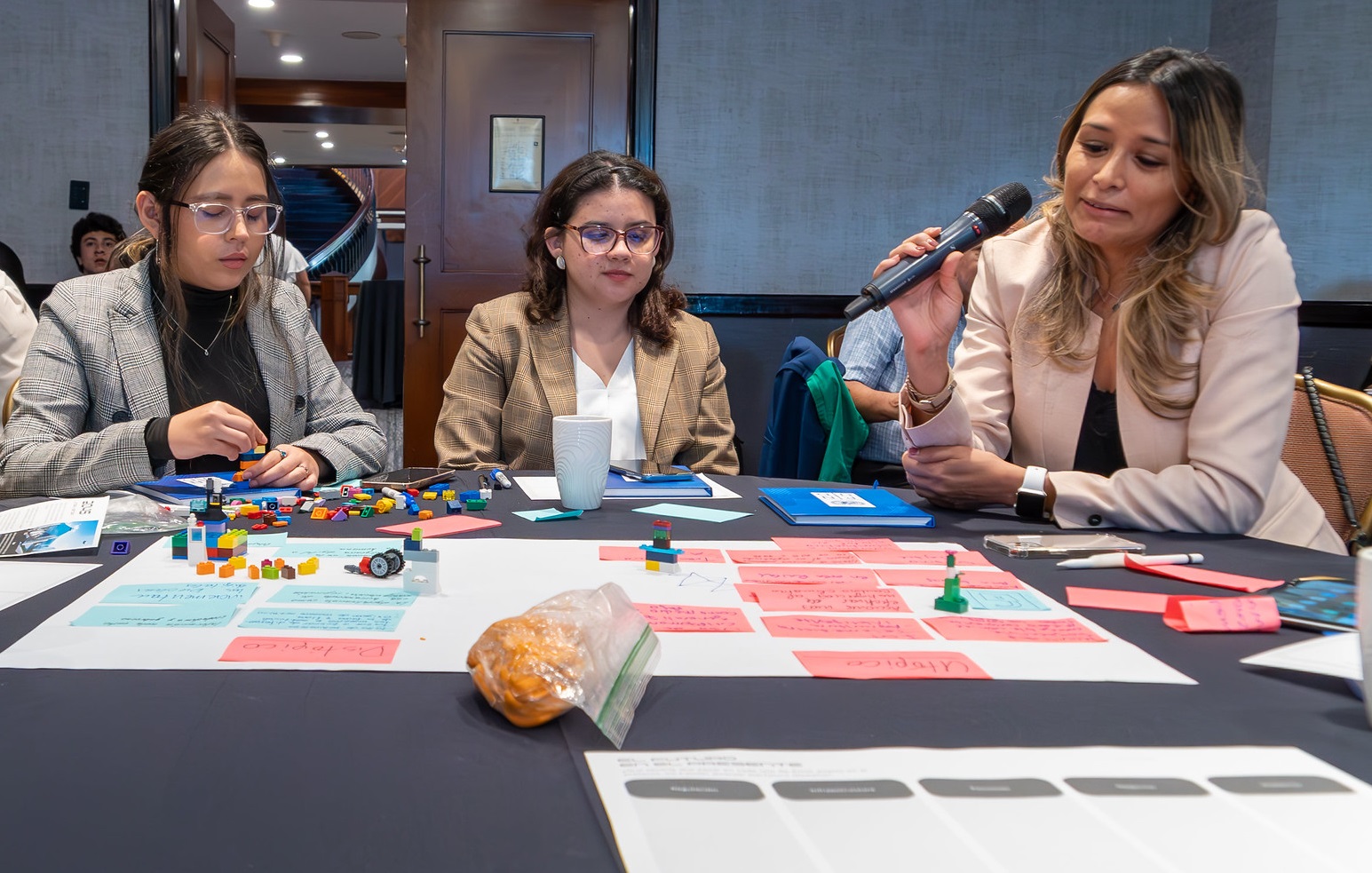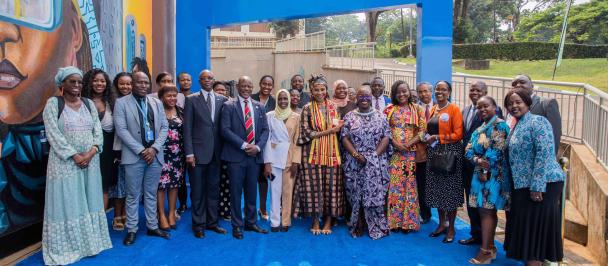Shaping a rights-based approach in Guatemala’s digital transformation
December 15, 2023

To yield maximum development benefits, digital transformation must be inclusive.
Guatemala, like other countries around the world, is increasingly leveraging digital technologies. Yet to yield positive development outcomes, an inclusive and whole-of-society approach to digital transformation needs to be a priority. Partnering with stakeholders in governments, businesses, academia and civil society, the UNDP has developed a Digital Readiness Assessment (DRA) to accelerate inclusive digital transformation in countries around the world. This blog reflects on Guatemala’s journey, and shows how the DRA has played an important role in shaping insights, recommendations, and actions to support the country and its people to explore the potential of digital.
Gathering diverse insights
The COVID-19 pandemic reaffirmed that digital is a crucial tool for development. Several countries embraced digital technologies to deliver public services. Digital also drove remote working, learning, and business in many places. Adoption of digital technologies though goes beyond a direct plug and play; it calls into question countries’ degree of readiness with respect to infrastructure, governance, people, and other areas.
Launched in 2020, the DRA came about out of the desire to help countries evaluate and plan for their digital transformation journeys. It is designed to offer rapid, high-level insights into a country's digital strengths and to find areas for improvement. It integrates findings from stakeholder perception surveys, open-source data, and context specific in-depth desk research, which help to inform recommendations for transformation.
The DRA seeks to uncover diverse perspectives from across society, including those of government officials, business leaders, civil society groups, particularly those representing at-risk populations, and the academic community. In Guatemala, UNDP led the process in close collaboration with the Presidential Commission on Open and Electronic Government (GAE), and Red Ciudadana, a civil society organization focused on promoting democracy and bringing people closer to public policy participatory processes. The process engaged more than 100 stakeholders and included the analysis of 30 datasets and over 50 documents.

The Digital Readiness Assessment was created to help countries evaluate and plan for their digital transformation journeys.
Highlights of digital transformation
The DRA is founded on UNDP’s Digital Transformation Framework, which adopts a comprehensive approach to digital transformation that goes beyond technology and focuses on the role of digital for people’s lives and livelihoods. The framework has five key areas of digital transformation; connectivity, government, regulation, the economy, and people. In Guatemala, the DRA highlighted that:
- In terms of connectivity, 100 percent of the country’s population is covered by a mobile cellular network, 95 percent is covered by a 3G network, and 88 percent is covered by a 4G network. This suggests a strong foundation for enhancing national connectivity. But at the same time, the innovation ecosystem — a dynamic network that combines elements such as human capital, collective experience, relevant institutions and incentive mechanisms to form the soft infrastructure to help drive digital transformation — seems to be less coherent. This highlights opportunities for government interventions, effectively unifying innovation initiatives within the country under a cohesive vision. This approach would streamline efforts and ensure that all innovation activities are aligned with national priorities.
- As demonstrated in the Digital Government Plan for 2021-2026, there is committed government and political leadership and a well-defined vision for digital transformation. These are important assets. Along with a digitally adept workforce, the government's commitment is crucial in securing financing and supporting evidence-based digital policies to deliver inclusive public services.
- Regulation presents a challenge for many countries, as the rapid pace of technological advancement often outstrips regulatory adaptations. Furthermore, each country has a unique political, economic, sociological, technological, legal and environmental context. In Guatemala, strengthening data protection standards and enablers for e-commerce are important priorities. Beyond this, a broader gap analysis of the relevance and role of existing regulatory frameworks, including legislations, oversight, guidelines, and policies could also be important.
- The entrepreneurial environment is commendable. This was evident in 2021 with the launch of the Ministry of Economy’s National Entrepreneurship Network that adopted a territorial approach to incorporate over 180 businesses from various regions of the country. This was a pioneering effort to comprehensively map Guatemala's entrepreneurship ecosystem, which has provided an updated view of stakeholders in the public and private sectors and academia. It has enabled insights into the ecosystem’s dynamics, strengths, and areas needing improvement. Still, one of the main challenges lies in financing incentives - financial strategies designed to motivate specific actions in areas like investments or business activities, including grants, subsidies, or low-interest loans - which are important for fostering and sustaining new digital initiatives.
- There is a growing digital culture, with people using digital in many parts of their lives. Guatemala has witnessed significant growth in the use of digital technologies, with the amount of Internet users rising from 8.3 percent in 2008 to 65 percent in 2018. This surpassed the average for Latin America and the Caribbean, according to OECD estimates. Nonetheless, the DRA has revealed that more needs to be done to close the digital divide, such as addressing cultural norms, especially those related to gender roles, to ensure women have equitable access to mobile internet.
A whole-of-society digital transformation is also founded on several catalysts, increasingly being recognized as digital public infrastructure (DPI). This includes data exchange layers, digital payment mechanisms, and national digital ID. While Guatemala has made strides in this area, launching the Open Data Portal by the Ministry of Finance, issues related to timely data updates and adequate data management and governance still exist. Similarly, Guatemala’s digital legal identity systems provide access to health, finance, and tax services, but barriers like limited awareness, insufficient digital skills, and technical limitations still hinder broader use. Although there are strong institutional and legal bases to amplify use, there's a need to invest in technical expertise and digital solutions. The adoption of digital payment mechanisms has been driven by updates in the legal framework where administrative procedures are more simplified. For instance, the Ministry of Finance has been facilitating the integration of digital payment platforms at the municipal level. Notwithstanding, these initiatives are scattered, and the existing Digital Government Plan does not include a comprehensive strategy for widespread digital payments.

Guatemala's Digital Readiness Assessment has played an important role in shaping insights and recommendations to support its people to explore the potential of digital.
Recommendations
The insights that emerged from the DRA in Guatemala underscored the importance of this first step assessment in the country’s digital transformation. They have helped to shape the following recommendations:
Adopt a sustainable DPI approach: Besides the technological component, DPI would encompass building robust governance to ensure safeguards are in place, and strengthening the local digital ecosystems on which the success of DPI implementation lies. These safeguards should involve incorporating gender responsive measures and ensuring it is built on a rights-based framework that promotes inclusivity and equitable access. Guatemala aspires to over time design a sustainable DPI, with immediate efforts focused on reinforcing its digital legal identification system; promoting digital payments; and constructing strong data exchange systems and interoperability frameworks.
Following through on this recommendation, Guatemala became a member of the Digital Public Goods Alliance – “a multi-stakeholder initiative with a mission to accelerate the attainment of the sustainable development goals in low- and middle-income countries by facilitating the discovery, development, use of, and investment in, digital public goods". Open and interoperable, DPGs can help the country advance its digital development priorities, such as improving government efficiency by utilizing digital technology to boost productivity and quality in public service delivery, fostering digital inclusion to ensure equitable access to information and communication technologies, or developing digital payments. As one of the ‘first-mover’ countries of the 50-in-5 country-led advocacy campaign focused on advancing DPI, Guatemala is committed to designing, launching, and expanding at least one DPI initiative within the next five years.
Assess disparities to reduce connectivity gaps: Guatemala has a strong foundation for national connectivity, but some of the hurdles include the cost of fiber optic internet access, limited internet service providers, and a pronounced difference in the quality of services available in rural versus urban areas.
One idea put forward is the establishment of a National Broadband Plan (NBP), which sets objectives to guide broadband expansion and related policies. The Superintendency on Telecommunications of Guatemala is designing its National Digital Connectivity Plan to respond to the changes in regulation that occurred earlier in the year with the amended the General Telecommunications Law. Now, 75 percent of the revenue from frequency auctions will be channeled towards the Superintendency on Telecommunications and this substantial funding will provide internet to government institutions, prioritizing schools, hospitals, and local police stations. The National Digital Connectivity Plan will be a key instrument in outlining the allocation of funds raised from the auctions, representing a major opportunity to ensure a structured and effective deployment of resources for maximum impact in digital inclusion and bridging the digital divide.
Adopt a design thinking mindset focused on people: Digital transformation should revolve around people. It should resonate with their needs, experiences, and ambitions. A people-centred approach that champions participation, interaction, and user-centric design is paramount. From enabling better feedback to more effective evaluation of digital adoption, this approach will ultimately transform how a country goes about developing products, services and processes as part of its digital transformation.
The DRA insights and recommendations have catalyzed a national conversation on digital development. Following an internal presentation of the final DRA report to GAE, a public forum was organized. It brought together key stakeholders to discuss the results and design next steps, as well as rallying international development entities such as UNICEF, UNFPA, UNESCO, the EU, IDB, and the World Bank. The Digital Government Plan for 2021-2026 is looking to prioritize digital education by introducing training in digital literacy, business skills, and financial inclusion based on the needs and context of citizens, officials, and businesses.
Looking ahead
In this swiftly advancing technological age, it is crucial to ensure that technology doesn't worsen existing inequalities. A whole-of-society approach to digital transformation provides countries with an inclusive blueprint to mold their digital trajectories. This ensures that all viewpoints are considered and prioritizes the inclusion of the most vulnerable. With Digital Readiness Assessments conducted by UNDP in more than 30 countries since 2020, it is interesting to observe how common some of the challenges are that countries face, as well as how shared solutions and learnings can be useful in getting them to the next stage of their digital transformation journeys. If you want to learn more about the DRA and how we might support your country’s digital development, get in touch with us: digital@undp.org

 Locations
Locations





